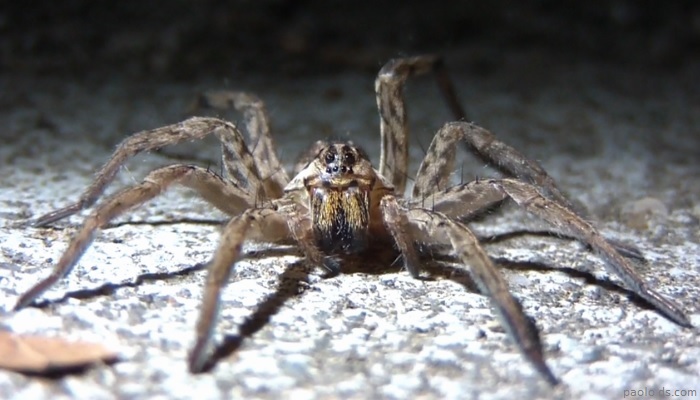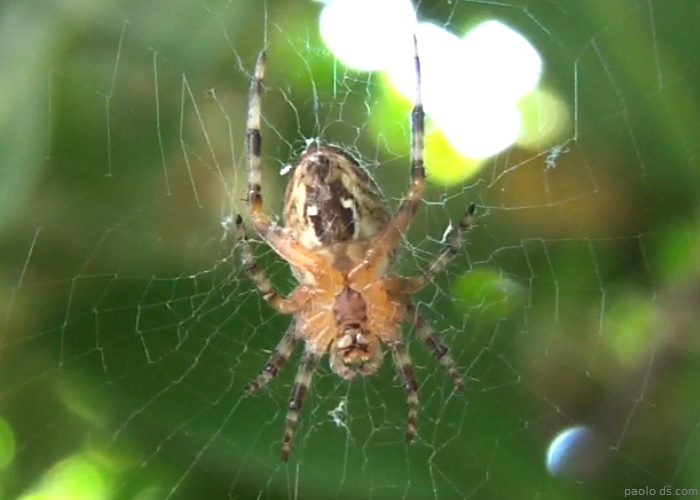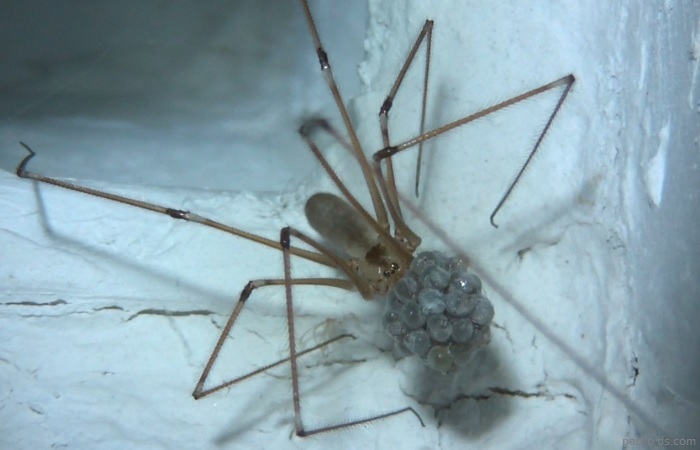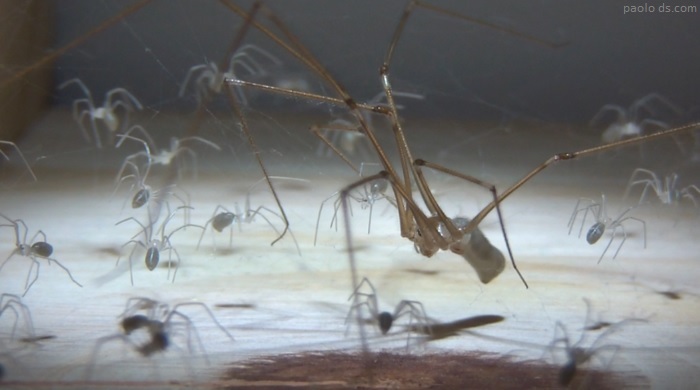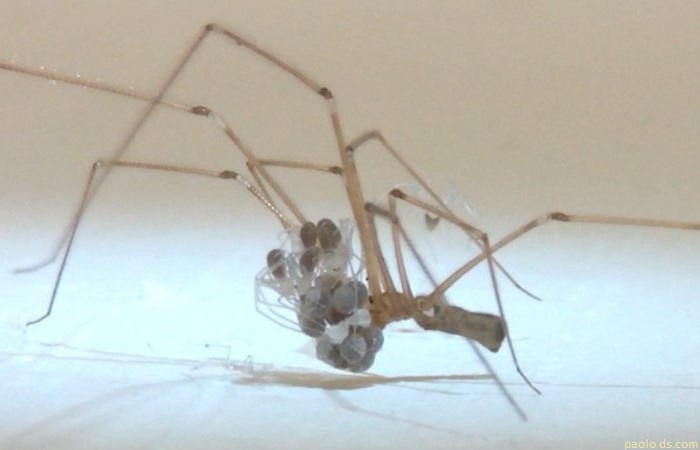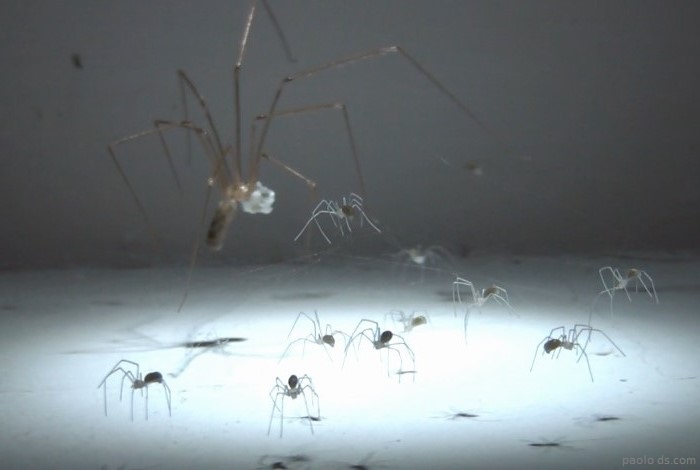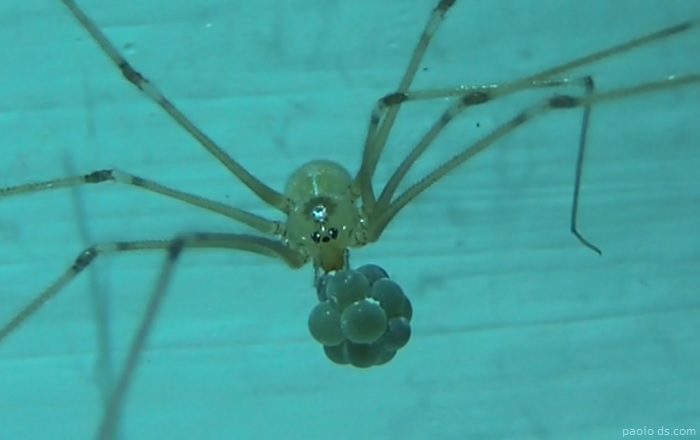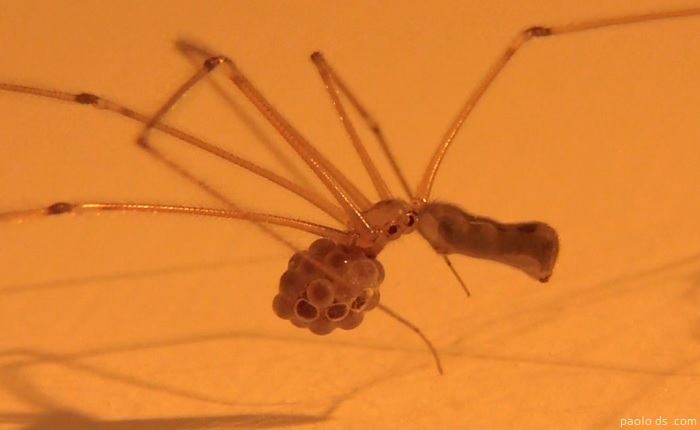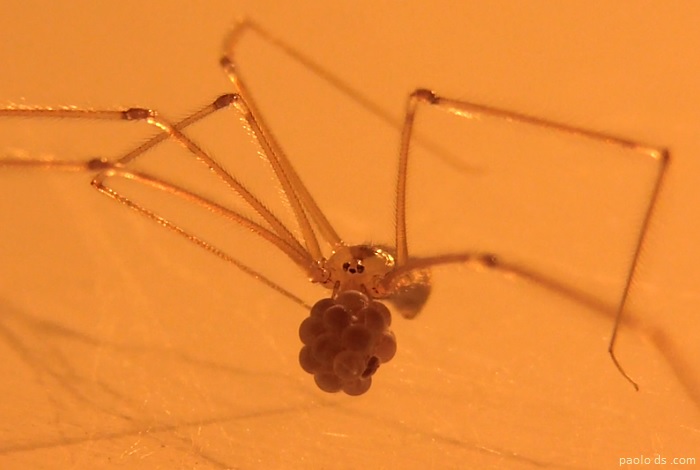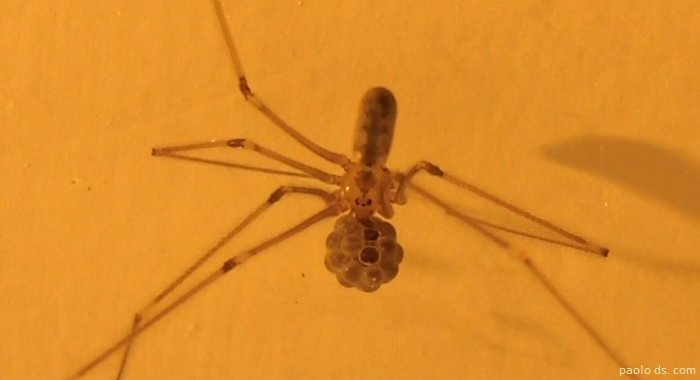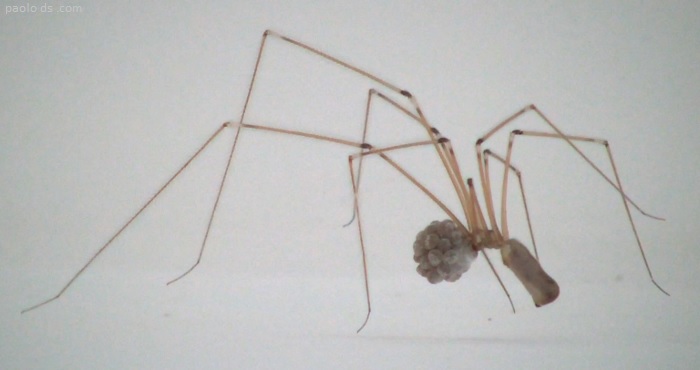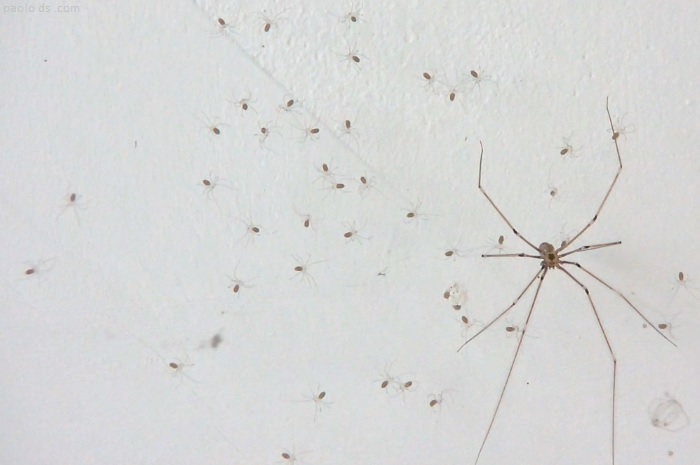It’s not long since I returned from the United States, where I spent a period of two months and a half, so here are some impressions that I got from this trip.
I spent most of the time on the west coast, especially in the area of Los Angeles (California), but I also visited Las Vegas (Nevada), New Orleans (Louisiana), and for few days I’ve also been in Baja California, which is part of Mexico.
Before writing in detail about the different places I want to make a general consideration, and that’s that once again I realized how traveling around the world is infinitely more educational than going to school or to the university! I’ve seen so many new places, talked with many new people that reason and behave in a “different” way, and each time I was thinking “really interesting” and “discovering all this is incredibly more useful than the mass of uselessness studied in the classroom for years and years!”.
Inevitably I will compare what I’ve seen with the world I’m used to, that is Italy (mostly) and Spain, as these are the two countries where I spend most of the time.
California
I had a very fortunate perspective of the area of Los Angeles, as I’ve been in part guest of a friend that lives outside the city, on the mountains behind Santa Monica, and in part guest of a friend that lives in the city, in the Sherman Oaks neighborhood. Let’s start with the mountains.
Santa Monica mountains. Quite surprisingly, considering those that could have been the expectations for a trip to Los Angeles, the main and most beautiful character of this period has been certainly nature. I lived immersed in a natural park, in a really unique position one hour from the city center, twenty minutes from the famous Malibu beach, and especially within a two minutes walk from an incredible quantity of wild animals.
Having grown partially in the countryside I’ve seen plenty of animals in my life, so it’s not easy to impress me. But here we’re really talking about another order of magnitude. In the morning I was leaving early for a walk on the trails, and time few minutes after leaving home I was already seeing an extraordinary number of animals. It made me think about what I heard from some elder people, that “once” you would see way more animals in the gardens and in the countryside: probably this is how it was everywhere at that time, I was thinking while walking.
In addition to being many, the animals fascinated me for the type: they had shapes and colors that I had never seen before. Even the most common animals were still a bit different from those of my area. For example the “simple” lizards: in California they tend to be bigger, darker, with pronounced scales. Then naturally there were the lizards that were much less “simple”: I’ve seen one with a blue tail (!) and several times I saw the super cute horned lizard, that deserved a personal video:
Among the wild animals that I met on the Santa Monica mountains there are: rabbits (so many), frogs, turtles, snakes, raccoons, quail, herons, night herons, woodpecker, coyote, “normal” squirrels and ground squirrels, “normal” ducks and ducks with blue bill, coots, grackles, hummingbirds, bobcat, deer, schools of hundreds of baby-catfish, clouds of butterflies. In my typical walk on the trails I was seeing a selection of animals belonging to 5/6 of these species, plus many others never seen before to which I can’t associate a name, unless I use a long description (especially for birds and insects).
Here is a mini-documentary that I produced in this period:
In the video I’ve been able to include only a part of the animals that I’ve seen. I would have liked to include many others but they were too difficult to film, either because they were moving too much (for example the hummingbird that was moving constantly) or because they were too shy and they were running away quickly. I actually noticed this “shyness” in all the animals of the area, and I guess it depends on the fact that the environment was extremely competitive (in other terms: stay always on guard or you will be eaten).
From the video you can see also how is the vegetation the area: very few tall trees or woods, instead there are almost exclusively short bushes and adapted to the dry climate. Many sage plants (that I liked to sniff constantly during my walks).
Malibu. Before getting to Los Angeles city, few notes on Malibu. This is the coastal area famous for being the residency of many Hollywood celebrities, where the houses cost (many) millions of dollars. In theory this should be one of the areas with highest demand not only of Los Angeles, but in the world.
For this reason it seemed weird to me that, at least the times I walked on the beach, a good part of those fabulous houses seemed empty. Clean and in order, but empty. Terraces with no one sunbathing, at most just a housekeeper cleaning around. Even on the beach in front there were relatively few people walking or swimming in the water. The ocean was practically desert, without boats. Weird. Where were the yachts, the millionaires discussing business in front of a drink, the botoxed wives on the beach discussing gossip and laughing at how stupid poor people are, the privileged children taking selfies with friends, the actresses walking their ridiculous micro-dogs?
Could it be that all those celebrities have such a work ethic that they don’t let themselves fool around their mansions, contrarily to me, free in the middle of the week walking around Malibu? The explaination that I found is that actually, even if incredible to think, maybe those fabulous houses are nothing else than second homes for the super rich owners. Owners that were not there simply because they were in others of their houses, or maybe traveling around the world.
Another reason anyway could be that Malibu beach is ugly. This could seem like a strong statement, but that’s exactly the impression that I had. Not only Malibu, I extend this evaluation to all the coastal areas and the beaches around Los Angeles that I’ve seen: the ocean was not attractive at all. The water was not blue, but everywhere a bit muddy and not really transparent. Often in the air there was a mist that made the atmosphere gray. Almost never I’ve been able to see far away the sharp line of separation between ocean and sky: it was always a blurry and grayish transition.
The beaches didn’t show any sign of life: I didn’t see fish in the water (except dolphins far away). Zero shells on the sand. Really a weird contrast compared to the large number of animals on the mountains, within short distance. Not a structure to buy anything, not even a minuscule kiosk to buy at least something to drink. The ocean as I wrote above definitely doesn’t give the impression of being “animated”: very few were the sailboats or the motorboats. I haven’t seen at all fishing boats, cruise ships or large cargo ships. The only ones that I’ve seen “using” the ocean were the surfers -those did- but even them, they were only concentrated around specific areas (for example around Adamson House).
A person living in the area explained to me that this gray and foggy climate of the beaches depends on the geography of the pacific coast and it’s limited to the period in which I’ve seen it (april – may – june). According to him grayness and mist disappear right after, and in summer the beach is much more pleasant for sunbathing and swimming. Maybe it’s like this.
Los Angeles. My impression of Los Angeles is probably conditioned from having spent more time in the best areas, however one thing is certain: the general level of wealth is enormous. It can be seen from the luxury houses, from the gigantic cars, from people’s look: well dressed, well groomed, well put together. In my visit to the Beverly Hills neighborhood I was sure (and amused) of being on the podium of the worst dressed in the entire street. In the Venice neighborhood I saw a sign with an offer of 20.000 dollars as a reward for a lost cat, and I think that is was not a joke.
Upon what is the economy of Los Angeles based? Apart from the obvious quantity of people related to entertainment and Hollywood, I found that a surprising number of people work in the real estate sector. In practice all those to whom I asked “what do you do” replied real estate agent, or something related to buying and selling houses. It seems that the real estate market in the city is hot: I heard that a property put on the market is sold often within a week, and this despite the prices are always in the range of millions.
What kind of shops populate the streets? To confirm the wealth of the city there are in fact beauty salons and yoga gyms. There is a crazy mass of restaurants of every type, competing ferociously. Interestingly I noticed several “psychic” shops, something that definitely you don’t see in Europe, where instead the many more churches take care of catalyzing the spiritual desire of people. One peculiar (and comic) thing are the many ads on the streets with pictures of lawyers with a resolute expression, that offer assistance for trials regarding car accidents or various injuries. It definitely seems that the United States are overcrowded by lawyers hunting for easy cases, to obtain reimbursements of all types.
I believe anyway that especially in Los Angeles live a particularly high number of entrepreneurs, self-employeed, investors, wanna-be actors, artists, or people that don’t work at all. To these categories in fact belong almost all the people I talked with. In the streets of the city the only ones that can be noticed doing “visible” work are the mexican workers, that here and there take care of the gardens of rich people or do construction work. Actually I haven’t seen a single worker around that wasn’t mexican.
The fact that many people don’t have an employee job turn into a mistery the fact that there’s a crazy traffic on the streets of the city, for which I found that Los Angeles is “famous”. I was also stuck in the jam for hours and hours. And yet I was looking at that stream of cars around me and I was wondering: where are all these people going? Why do they move? The congestion is perennial and often even at inexplicable times, like at late morning.
A couple notes on the people of Los Angeles and surroundings, since it’s in this area that I chatted more often with local people, and here is where I spent most of the time.
Maybe I’ve been lucky, but I’ve known many people with interesting stories and pleasant to conversate with. Obviously living in wealth make it easier to be relaxed and well disposed, but still it impressed me how people in general seemed well adapted to society. Seeing people moving so much at ease between beautiful houses, beautiful neighborhoods and beautiful shops, seemed to me kind of… weird. Where was the torment? Where were the worried faces of my little town in Italy? Where was the dysfunction? Almost everyone was saying hi to me with kind words and seemed genuinely well disposed. When I was talking with people, I wasn’t detecting all that chronic pessimism and that negativity that instead I detect often talking with the people of my town.
I’m sure that even in Los Angeles, after all, people have their gnawings and their problems, but in general I really noticed a great social interface in people. My idea in fact is that “rich people” often are not rich by chance, but they are for the mentality that they have and for their way of doing things. Instead of just complaining using the typical italian formula (“everything sucks – they’re all corrupted – they don’t let you do anything”), in Los Angeles I think that the formula is instead “let’s see what type of business could work today”. There’s definitely a more possibilistic mindset and much more spirit of initiative than in Italy.
The crisis of Hollywood. It’s not a mistery that Hollywood is going through a huge crisis, in terms of revenues but even more in terms of ideas. I actually realized this already at home, since now it’s been years that many movies that arrive in the theaters are total garbage: cliches seen over and over, old movies “remade” and reproposed as new, movies with no plot filled only with murders and fears, movies dragged on with “sequels” or dragged back with “prequels”. Producing something new… would be too much eh?
In fact I actually almost completely stopped going to movie theaters: too many times I felt insulted to have to pay both to see movies that are so bad, and to have to watch 20 minutes of commercials before the movie itself. It happens only rarely that I still end up in a theater, if the proposal comes from some friend, and in that case my approach is wary but possibilistic: “mah let’s take a look, maybe it’s time to reupdate my evaluation of Hollywood…”. No, each time the evaluation gets renewed: the movies that arrive in the theaters are still garbage. Last confirmation from the movie Life with actors Jake Gyllenhaal and Ryan Reynolds, that I had the displeasure of watching: if I was a famous actor no price would convince me to take part in such crap.
Anyway getting back to Los Angeles, I was curious to search for evidence of the crisis in the homeland of movies itself, and I saw it. To confirm the total lack of ideas, on the manifestos of the city they were advertising: the emoticon movie (seriously?), the smurfs movie (an animated cartoon that I used to watch as a kid 30 years ago), the n-th episode of Pirates of the Caribbean with the tired face of Johnny Depp, the second episode of Guardians of the Galaxy, and in particular many advertisements of not movies anymore, but of series of fiction on-demand, that people watch privately at home, instead of going to the movie theaters.
It didn’t happen during this trip, but I would have been damn curious to have a conversation with some producer or actor of Hollywood, to find out if they confirmed my impression: that movie producers at this point have become extremely selective in choosing which movies to produce, since many now are generating breadcrumbs compared to the past, and actually many cause even losses (the so called “box office bombs”). So they don’t invest anymore in risky new things, but they only recycle things that already worked in the past. An example is the constant hammering on movies with superheroes.
Then there’s a second big doubt with which I arrived in California, hoping to find a solution, but instead I brought it back home, since no one gave me a convincing explaination. The doubt is about the reaction so extreme and averse that Hollywood has toward the current president Donald Trump. I get it that California and Hollywood in particular have a liberal orientation, but yet this to me is not enough to explain a level of outrage that is so high, especially in the specific of Hollywood. Almost all the actors are flaming against Trump in the interviews, on the social media. A level of aversion too strong to be explained only by the fact that “Hollywood is liberal”. There must be some aspect that I’m missing, economic or who knows, that probably a person who’s inside Hollywood could explain to me better.
Actually in this period in Los Angeles I happened to see a couple of famous actors, but I didn’t bother them. This happened in the Starbucks coffee in the Sherman Oaks neighborhood, where I liked to go for coffee in the morning. The pleasure actually was deriving from the walk to get there and for the chance to study the customers, definitely not for the coffee itself. In fact here are some of my thoughts on coffee.
Coffee. Americans have no clue what “coffee” means. I mean that the philosophy itself of coffee that they have, as an italian I can’t define it in any other way than wrong and to be contrasted ruthlessly! 🙂
In Italy if you enter a bar and ask for “a coffee” the transaction is simple and effective: the bartender puts an espresso in front of you without too many questions, and you pay approximately 1 euro. Easy. In Los Angeles when I asked for “a coffee” in the Starbucks they asked me strange questions: if I wanted a cold or hot brew, what level of roasting, how many “shots” I wanted, if it was to take away. Each time we didn’t understand each other and I was ending up with a different coffee at a different price (always too high). The fact is that Starbucks has dozens of options on the menu, all of them apparently having something to do with coffee, but none decent. They’re all concoctions of caffeine, chemical additives and sugar.
Anyway there’s an interesting situation regarding this famous chain of coffeehouses, that explains why it had so much success: they simply found a huge niche in the market that was empty. A really gigantic one. It’s weird to think about it, but in many areas of the United States no bars existed before Starbucks. In other terms there were very few places that corresponded (even if vaguely) to what an italian bar is, a place where you can go during the day simply for a coffee, to socialize or to read the newspapers. Before in the United States there were mostly only restaurants, places where to have complete meals like lunch and dinner. This explaination comes from the friend of Santa Monica and it seemed very valid to me.
Of course at Starbucks they reinterpreted the concept of bar their own way, producing a “creature” of which some aspects are definitely questionable (the coffee itself indeed), but evidently they found a formula that in the United States works well, and not only there. Also there’s a couple of positive differences from the italian bars, they don’t sell neither cigarettes nor lotteries. Exactly the fact that cigarettes are not so easy to find everywhere in the bars, like it’s in Italy instead, contributes to the fact that an extraordinarily reduced number of people smoke in the United States. This in addition, I guess, to a campaign to demonize smoke that probably went on in recent years.
Obviously, other than Starbucks in the streets there are also independent bars scattered here and there, that don’t belong to the chain. I’ve been in several ones both in Los Angeles and in the other places visited in this trip. The weird thing though is that many of these independents didn’t seem really interested to compete with the colossus. I happened to enter in bars that didn’t have coffee (“we don’t have it, we only make it in winter”… eh?) or that had already “finished” it after lunch (…) or that were completely closing -the bars themselves- at three in the afternoon, which is exactly when you want to cheat with caffeine against the afternoon sleepiness. Really bizarre.
Anyway even today, between the many Starbucks and the independent bars scattered here and there, it seemed to me that there are still large areas of the country uncovered. More than once with my friends we had to drive for quite awhile, consulting the map on the telephone, searching for a bar where to have a coffee break.
Food. Regarding the grocery stores. Obviously I wasn’t expecting to find food with the high level of quality and freshness that can be found in many italian supermarkets, but nevertheless I found that spending a lot of money in Los Angeles you can bring home some fairly good food. Which makes sense considering the scenario of this city, where people are richer and more focused on health than in the average of the United States.
Fruits and vegetables of good quality can be found quite easily, even organic. But the problem is there and it’s in the animal foods, that means cheese, fish and meat: almost nothing is fresh. You see a bit of fish but it always looks like few days old. Among the cheeses the choice is very limited, and those of higher quality are all imported and really expensive. Fresh bread, what we italians call a “filone”, doesn’t exist at all, only shelves with packaged bread and often with chemical additives. Among the peculiarities of the supermarkets, in comparison with the italian and spanish ones, I noticed enormous sections of dietary supplements and pills of all types, and cashiers that were more kind and professional. Of course the kindness of the cashiers is part of the work interface, but it’s still nice to find it.
Regarding the restaurants instead, where in this period I went much more often than usual (that is almost never). As said in Los Angeles there are cuisines from all around the world. I tried some new interesting foods, especially from the asian cuisine. But I also realized that, more than in Europe, in the food of the restaurants there may be dangerous additives and of their presence is difficult to be aware, as there are no detailed nutrition labels to consult.
For example, once on the menu of a restaurant I saw the indication “without sodium glutamate” on a item, that made me wonder: so in all the other foods without this indication… here they can add the glutamate without any problem? After this episode I raised the level of guard, and yet despite this later during this trip (when I was in Louisiana actually) I got distracted anyway and made a severe error: I added a sauce to my food as condiment, and only later I thought about checking its label. Among the various “ingredients” that I had gulped there was aluminum…
A sharp difference with the italian and spanish restaurants: service is very fast everywhere. Almost every time you sit at a table, and immediately comes the waiter with the menus and to get orders for the drinks. Few minutes to consult the menus, and the waiter is already back with the drinks and to take the orders for the food. Everything happens so rapidly that often I had to ask for additional time to choose, more than once. The mechanism is exactly opposite to that of Italy and Spain, where instead in the restaurants often an eternity is needed before you get served.
A weird thing that happens in the american restaurants is that waiters come constantly during the meal to ask if “is everything ok?”. Once or twice would be even ok, a nice sign of consideration, but sometimes it happened even 4-5 times during the same lunch and the scene became frankly ridiculous. I wonder if in the United States the restaurants, that as I wrote above are in a ferociously competitive sector, depend a lot on the online reputation built with the feedbacks of the customers, so they have developed almost a sort of terror of receiving negative feedbacks.
Last note, which is a known fact: tips. Each time you eat in a restaurant you have to waste time to calculate the percentages. A really inefficient mechanism that they have in the United States, and that fortunately is not common in Italy and Spain. Sure in theory tips encourage a better service, but this really doesn’t justify the waste of time. Also to contribute to slow down the payment phase, I noticed that the american banknotes have all a similar color (a pale beige/yellow), so it’s difficult to distinguish a 1, 5 or 10 dollar bill without analyzing them. Weird that each bill doesn’t have a different color.
Agricolture. To me it seemed that California has a really favorable climate for agricolture, but I’ve seen this potential used only minimally: very few cultivated fields and very few vegetable gardens near the houses. I saw many wineyards, they definitely make wine, but for example I’ve seen almost no olive trees, and I have the impression that they would grow well here.
Anyway it seemed to me that many californians are focused on doing landscaping in their gardens but only for aesthetic reasons, planting definitely many beautiful flowers and ornamental trees, but that instead they’re not focused at all on planting fruits and vegetables near the house, that they prefer to buy in the grocery stores, at high prices and imported. In front of the houses I noticed that often they don’t even plant the minimum necessary, like at least a vase with herbs to cook with.
Nevada
Las Vegas. Las Vegas is like you would imagine it: the crowd, the lights, the casinos. Definitely interesting to see once in a lifetime, but obviously not the agitation in the middle of which I’d like to live long term. This is valid for the center anyway, there are peripheral and residential areas of the city where I’m sure you can live a much more “normal” life. Arriving with the car, already at first sight I’ve seen that the level of general wealth of Las Vegas is certainly lower than in Los Angeles.
The most interesting thing of the casinos was noticing that everything is scientifically designed to milk the visitors to the maximum. The typical casino (I’ve been at the Excalibur) is not a simple structure by itself but a combination: a tall building in which at the ground floor there’s the actual casino, and at the upper floors there is the hotel. So the guests of the hotel are forced to go through the casino to get in and out of the hotel.
The ground floor where people gamble is big, labyrinthine and on purpose lacking directions, getting lost is easy and you always end up spending more time between the slot machines and the gambling tables. There are no clocks on the walls to remind you that time is passing. If you sit at a table to gamble (I did it at blackjack table where I lost 20 dollars) there are waiters coming periodically to offer you free drinks. Obviously being a bit tipsy makes you lose inibitions and helps you gamble a little bit more.
Another fact that I noticed is that the hotel where I stayed had definitely a low price considered the great standard of the rooms. Even in this I’ve seen something astute: they attract visitors by making the stay in the hotel affordable, because they know that then the guests will leave the real money in the casino, where the effective part of the milking happens.
Both in the casinos and in the streets of Las Vegas, I noticed a difference in the look of people compared to Los Angeles. Here I started to see more people with bellies, here and there obese, and in general not as well put together anymore. As one of my friends had anticipated to me, with whom I had commented on the good shape of people of Los Angeles: “don’t worry, in Las Vegas you will see many more people that look typically american”. Despite this, even in Las Vegas the marvellous fact seen in Los Angeles continued to be true: almost nobody was smoking cigarettes.
Steve Pavlina. During my visit of Las Vegas I had the chance to meet Steve Pavlina, a blogger that lives right in this city and who accepted my invitation for a coffee and a chat. Actually only my friends and I drinked the coffee, Steve had just started since few days a water only fast, that he ended up prolonging up to 40 days (!).
For me it’s been really a special event, Steve is a brilliant man and his work has been very useful to me during the years, in fact I thanked him sincerely. He is without any doubt one of the people that influenced my philosophy of life the most, and actually the fact itself that I was there, to be able to travel in the United States for a period long months, came also from having put into practice his ideas on passive income. His popular article “10 reasons not to have a job” has been a main contributor to make me realize that the employee job I had years ago was a total joke, and in fact actually now no day passes by that I don’t bless the decision of nuking it.
There are also another couple aspects that made me happy about this chat. The first is that I was absolutely at ease in the conversation, an achievement considering that this is exactly the type of events that at times make me anxious, to a point that I even develop one of my proverbial panic attacks. The second is that also another of the friends sitting at the table belonged to that “club” of people that are special for me, that inspired me and helped me a lot in life. You know the saying “surround yourself with people that are more intelligent than you”? Well sitting at the table with these two, that I reunited myself, I thought smiling: “that’s exactly what I’m doing now, yes I’m doing things well!”.
Louisiana
New Orleans. Really interesting to see New Orleans and Louisiana after spending a lot of time in Los Angeles. The contrast was strong: I went from one of the richest areas of the country to one of the poorest.
I ignored the characteristics for which New Orleans is famous (almost always I travel to destinations on which I gather very little information in advance) and I discovered them only once I arrived there: for example that the city has a reputation for the live music, the art, the creole cuisine, the particular architecture. I didn’t even know that such a large percentage of the population was composed by black people. I guess that many are descendants of the slaves that once were working in the sugar cane plantations. The plantations still exist and I’ve seen them driving around Louisiana with a car.
Several things hit me. Definitely a drastic change in the look of people. Many more people seriously obese, and unfortunately an impressive number of people with physical problems, crooked, with limps or on a wheelchair, especially among the blacks. Quite a lot of people drunk in the streets and not looking lucid at all. I think that in New Orleans it’s easy to “get caught” by the theme of pubs, restaurants, jazz music to listen with a beer in front, the parades, the life of the tattooed “artist” that smokes and uses some drugs, and many end up feeling the effects on their physical and mental health. Another factor anyway is certainly diet.
Louisiana is one of the fattest states of the United States and you can tell. A couple times I took notice that inside the restaurant my friends and I were the only non fat clients. In fact the cuisine of Louisiana may be famous, but with me frankly it’s been a disaster. I would summarize it like this: all fried. There’s fish but it’s mostly low quality fish: shrimps that I suspect come almost always from farms, crawfish (similar to shrimps) that in addition to giving me the same suspicion when you eat them you have to throw away 90% of the body, catfish which is a bottom feeder fish. For an almost-vegetarian like me there’s the combination “white rice and beans”, not exactly something I would order at the restaurant but that at least could have filled me, but I found out soon that the beans were cooked in “gumbo” stews with meats coming from who knows where. Then of course there is more: the “Jambalaya” that is an ipercooked mix of rice vegetables and meat, a polenta called “grits”, and for the tourists the alligator sandwitch. Nothing anyway that seemed not harmful for health. Among the few exceptions maybe the oysters.
Even the grocery stores gave me several indications. First of all there seemed to be very few of them: in entire neighborhoods they were completely missing. Among those that I’ve seen many contained the word “dollar” in the name: family dollar, dollar general, dollar tree, to clearly signal the intention to deal with customers that don’t have too many dollars to spend. On the shelves a very sad scenario: processed products, packages, chemical additives, almost nothing fresh. Organic fruits and vegetables a remote mirage, at least in Los Angeles spending a fortune you would find them. I found myself buying some packaged water sold in those plastic containers with the shape that we italians associate to bleach and detergents. And the taste itself of water was bad. Really.
I’m a bit critical also about the musical and artistic scene of New Orleans. My impression is that jazz was born around here, but then got lost in the way a bit. Most of the live music to me seemed in fact the result of alcohol, smoke and frieds: little inspiration and lots of noise. Many bands in the streets were not playing nothing else than “covers” of already existing songs, producing worse versions compared to the original (here too, producing something new… would be too much eh?). The artistic reputation of the city refers essentially to vintage markets, decorative objects, less conventional dressing choices of people. Definitely interesting to see, but doesn’t resonate much with my concept of “art”.
One thing that I really appreciated of New Orleans however is the architecture, many neighborhoods are really cute. The typical house is a “shotgun” house, long and narrow, made of wood, with pastel colors. Under the roofs there are some wooden brackets with curls and floral patterns, and just those increase the charm of the houses significantly. Many buildings anyway seemed to need some fixing, especially new paint on the facades. This is a business that I think would work well in New Orleans, where in general I noticed a particularly low number of shops or businesses of any type (beside the shops related to tourism in the center).
I’ve also been in the area hit by hurricane Katrina in 2005, but I haven’t seen evident signs of the distaster. There were however several empty lots of land. I figure that at this point after many years the wreckages that had to be removed were removed, and many people moved away.
Other areas. I had the chance to see also other areas of Louisiana, traveling with a car. The landscape is definitely particular: all flat, with a very jagged coast, swamps, under a burning sun and with a strong humidity. In fact my level of physical energy in the two weeks here dropped drastically compared to normal.
In the countryside and on the coast the houses presented something new compared to those of New Orleans city: many were elevated on stilts, even several meters high. Clearly to avoid floodings. Many seemed unused anyway. I’ve also seen the old plantation houses, these days almost all of them turned into museums. The agricolture of the state seems to continue to consist only and exclusively in sugar cane: I haven’t seen anything else planted anywhere. There should be rice fields somewhere, considered both the favorable territory and the strong presence of rice in the local cuisine, but I haven’t seen them. Here and there I noticed large industrial factories, I think they were oil refineries.
One of the most interesting things was to see the swamps, another natural scenery very different from the one at home, and from the one seen in California and Nevada. In the swamps I’ve seen for the first time wild alligators, motionless on the trunks or near the water, waiting for preys. Weird actually to find myself with these animals, in “theory” dangerous, blended like this with naturalness in my same landscape. Those that I’ve seen anyway were relatively small, I’ve seen even some really cute baby alligators. I think anyway that underwater there may have been large alligators, few meters long, those that after all wouldn’t mind eating a person. I didn’t dive in to check.
In the car with my friends we drove along the coast toward east, until we saw even a little piece of the state of Mississippi. Even here the ocean (this time the coast faces the Gulf of Mexico) looked to me frankly “ugly” and a bit sad, even if it did have a sort of melancholic appeal. Only a stripe of white sand under the burning sun, no bushes, no shells, no fish, no boats. Almost no people on the beach. Weird.
Baja California
For few days I experienced also a little piece of Mexico, in the peninsula of Baja California that is a little under Los Angeles. Definitely another interesting contrast.
I had in mind this silly image of the small mexican town on a hill, the señores with mustache playing guitar, others sleeping under the sombrero hat for the siesta, the black haired girls with colored gowns, kids playing, smiles, cactuses. It’s not exactly what I’ve seen. Obviously I wasn’t expecting that Mexico would be doing as well as the United States, but I didn’t think that they were doing as bad as I’ve seen. Frankly, I thought they were doing a bit better.
Tijuana. Certainly to contribute to this impression was Tijuana, the first mexican city you meet as soon as you cross the border. Just few miles above there’s San Diego, that is still part of the United States and appears rich and in order, few miles below there’s Tijuana, that is already part of Mexico, and it appears as a tangle of shacks, favelas, messy traffic, run down cars, beggars. The shift in scenario is really drastic and sharp.
My vision of Tijuana anyway happened just on the way, from the car. We didn’t stop, also because everybody in California agreed in saying that “it’s not safe. Maybe you go and have no problems, but better to stay somewhere else.” I don’t think anyway that Tijuana represents the typical mexican city, probably it’s a bit “worse” for the geographic position, right near the border with the United States, that probably made it a crossroads for various types of smuggling, among which certainly drug.
Ensenada. This is a coastal town where I spent three days, and Ensenada already seemed to me definitely like a tranquil and safe place. It does have a certain touristic vocation, considering the souvenir shops and the restaurants, even if actually I haven’t seen many american tourists. Considering the low prices, the coast that is not bad, and that it is within reach for californians, there could be more, but maybe they don’t trust coming even here.
In Ensenada I’ve seen and eaten a bit of fresh fish (even if also the fish seen in the market near the harbor didn’t look super fresh, at least not like the fish I see in the markets of Italy and Spain). In the harbor there were many fishing boats anchored, but in the morning I was seeing only two or three heading to the ocean, the others were all idle. The culinary “scene” didn’t seem sensational, even if it’s in Ensenada that I had both the best coffee and the best dinner of the entire two months and a half of this trip. Purely by chance, the coffee was in an italian bar and the dinner was in an italian restaurant.
In the streets I noticed some peculiarities, the first rather curious is that many pharmacies were promoting with a certain emphasis that they were selling Viagra. I wonder if it’s because men around here are particularly focused on sex, or if the sale is intented for american tourists that maybe can buy the drug at reduced prices. I noticed also a large and definitely unusual number of signs with job offers, on shops both in the town and in the surroundings. I found it weird considering that the economy in the area is visibly all but “in ferment”. I tend to think that they’re jobs where they pay such a misery, that for local people having them or not makes almost no difference.
Among the things that I discovered in this trip there are the mexican television shows. They’re really… worth a note! Something that made my jaw drop in front of the tv: captivated and horrified at the same time. The words “trash” and “dreadful” don’t even give a close idea of what they broadcast around here.
Apparently the concept of entertainment in the mexican show is a large group of people amassed inside a tv studio, with grotesque costumes, that dance, trip each other, pinch each other on the arms, put elastic bands on the face while they sing karaoke, wink, wave, with the camera that spans from one person to the other, with the background of festive music. Actually one of my friends made me notice that one of the characters of the Simsons cartoon, Bumblebee man, is portraying exactly one of these characters of the mexican shows. I’m rather shocked anyway: I swear that I won’t complain anymore about the italian trash shows, since the worst of them is still broadcasting high philosophy compared to the mexican ones!
Notes: Some time ago I reworked the article “10 reasons not to have a job” into a personal form, producing a version that can be found at this link.
Related: Trolled by the Balkans

